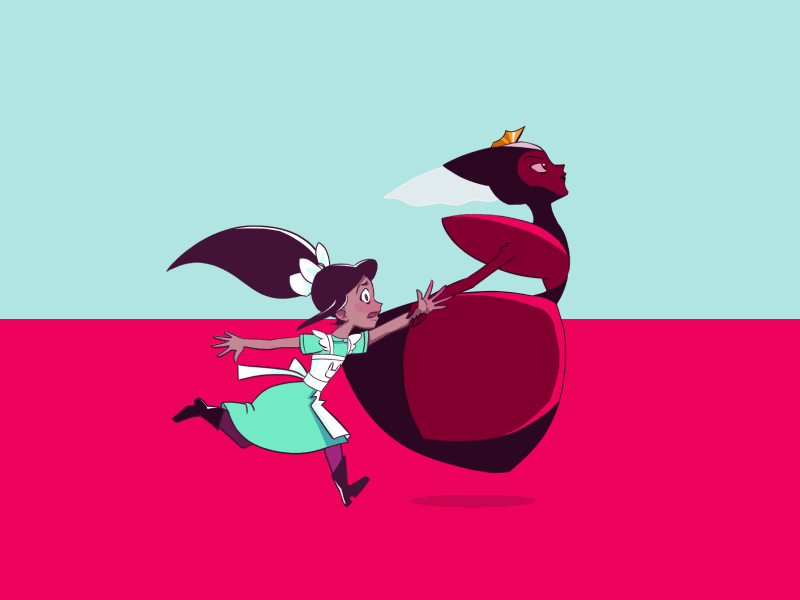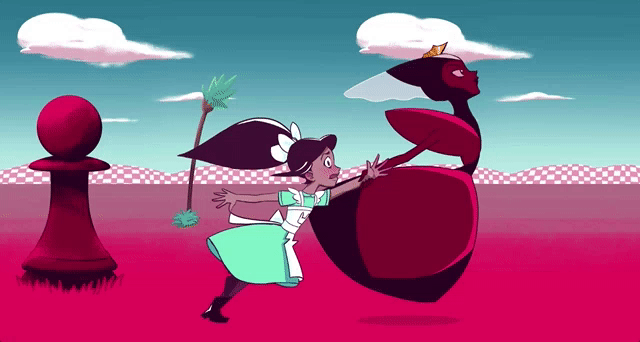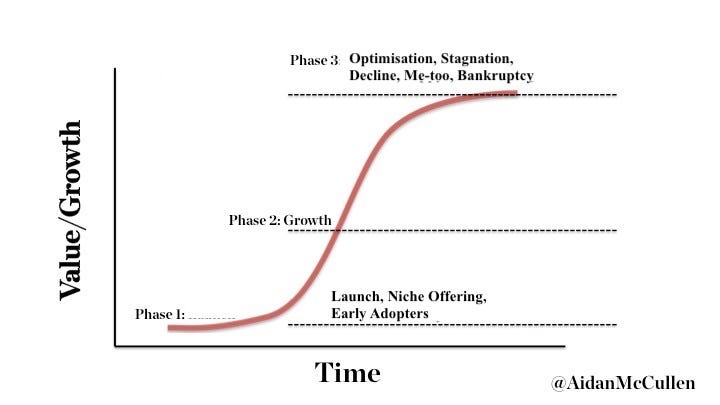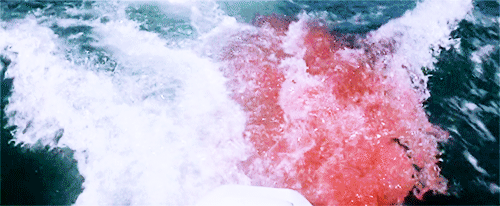“No man ever steps in the same river twice, for it’s not the same river and he’s not the same man.” ― Heraclitus
This quote is by pre-Socratic Greek philosopher Heraclitus who lived 535 — c. 475 BC. It contains such immense wisdom for life and indeed for business.
80% of companies that were on the Fortune 500 twenty years ago are no longer there. We are tempted to optimise our business and focus on incremental innovation and protecting existing revenues.
However, this is not enough, we need a portfolio approach to our innovation and transformation approaches. We need to plan for the near term, medium term and far term.
Heraclitus’ wisdom in a business sense can be interpreted to mean a business does not stay the same, it evolves, it must evolve or face extinction. In tandem, the environment in which the business operates does not stay the same, it also evolves.
Both forces are evolving and both are moving quicker than ever before. On this Thursday Thought we explore this concept and we touch on a couple of approaches with the concept of a Red Ocean and a Red Team.
The Red Queen Race
“Well, in our country,” said Alice, still panting a little, “you’d generally get to somewhere else — if you run very fast for a long time, as we’ve been doing.”
“A slow sort of country!” said the Queen. “Now, here, you see, it takes all the running you can do, to keep in the same place. If you want to get somewhere else, you must run at least twice as fast as that!”

The Red Queen is a fictional character in Lewis Carroll’s fantasy novel Through the Looking-Glass.
In the novel there is an event called “The Red Queen’s race” which involves the Red Queen and Alice constantly running but remaining in the same spot.
The Red Queen effect, is a term coined by evolutionary biologist Leigh Van Valen as a hypothesis which proposes that organisms must constantly adapt and evolve to survive while pitted against ever-evolving opposing organisms in a constantly changing environment.
Our guest on this week’s innovation show is Ralph Welborn PhD, author of “Topple — The End of the Firm-Based Strategy and Rise of New Models for Explosive Growth.”
Ralph uses the term “Red Queen’s Race” to explain the extremely common reaction by business leaders to transformation — running faster and faster but within a world that no longer exists.
To explore this further consider the use of the sigmoid curve or S curve to map the evolution of any business, product or service. S curves follow the shape of the letter S with a shallow start with early adopters and niche clientele. Rapid growth comes next, followed by a dominant position in the market.
All business, products and services (and life) have a natural decay rate. When businesses fail to innovate and iterate, they eventually experience stagnation. Many business then turn ti branding, marketing, process optimisation, digitisation, automation and job cuts.
Rather than innovate, they choose to optimise. When you have an outdated or no longer-relevant business model you are simply accelerating the demise of that business model. Yes, you are busy doing so, but you are simply applying lipstick to a pig, it will still be a pig.
“If everyone’s super, no one will be.” — Syndrome
In the movie ‘The Incredibles’ the arch-villain Syndrome builds inventions to give anybody superpowers so that “natural” superheroes wouldn’t be special anymore, because everyone would be the same. What a great metaphor for what we see in business all the time.
To optimise our businesses, we tend to find out who is doing the best job and then copy the “best in class”. Well, if everyone copies the best in class, then what happens when everyone becomes the same best in class?
To truly innovate companies and leaders need to jump from one S curve to another, but few have the courage to do so. As Ralph Welborn tells us on this week’s show, we need to ask new strategic questions, we need to explore where and how value is being created and destroyed and we need to learn from explosive growth businesses and how they operate and engage within ecosystems. When looking at explosive growth companies we need to understand that industry boundaries have blurred and that we need to follow “best principles” rather than just “best practices”.
Red Oceans
Closely related to running the Red Queen race and competing on the top of an S curve is the term Red Ocean strategy.
The term comes from researchers who saw businesses fighting over the same customers akin to sharks fighting over the same prey.
When your business competes in a “Red Ocean”, it competes in an overcrowded market, competing on price and exploiting existing and well-established customer demand.
Many businesses which have already been disrupted or which are running out of runway en route to disruption are surviving in a red ocean.
The alternative is the clear water of the blue ocean, with bountiful food and less competition for that food. A blue ocean strategy is where you generate new demand with new customers who have been previous non-consumers.
The Red Queen race, S curves and Red Oceans are well established business theories. Ralph Welborn tells us we need to go a step further than simply jumping S curves and creating blue ocean strategies. In order to compete successfully in this new business paradigm, we need to shift our focus from how to improve our products and services to uncover what it is that customers actually want to achieve and how existing (and new) products and services could help them achieve that.
The upside to this age of mass disruption is that it is also fertile ground of mass opportunity. To make it a land of opportunity mental models must first change in order to change business models.
One way to change mental models is to bring in new people or to assign a team to look to the future of the business, a team which exists solely for that purpose.
Red Teams
Humans have blind spots for our errors. We rationalise why we do things and we become crystallised in our beliefs and why things are done a certain way.
Just think of when we are “too close to something”, we need to distance ourselves to see things clearly. Let’s take for example that you write a proposal, a blog or a paper of any kind. Good practice would suggest that we ask someone to proofread it and it is rare that they would not find a mistake.
An organisation is but a mass of humans, with a mass of habits and a mass of procedures, so organisation are also prone to blind spots.
In the world of cybersecurity, there is a term known as a “Pen Test or Penetration Test”. This is when an organisation engages a cybersecurity company to simulate an attack on their computer systems to uncover weaknesses. Another example would be businesses hiring ex-criminals to stress test security systems. Many governments have such teams to test the the national security of that country for example.
These teams are known as Red Teams.
Red teams are there to uncover hidden problems and suggest possible solutions. In an organisation a red team would uncover chinks in the strategic armour of the business. They question perceived logic and pose the difficult questions that business leaders quite often (for fear of damaging relationships or losing face) do not ask themselves.
To be truly effective red teams must be embraced by organisations to experience normal business operations. However, red teams are treated with suspicion and contempt (much like an audit team) because they are there to find flaws and opportunities for improvement.
Even when red teams do uncover flaws and possible new directions for the future those findings are often ignored or swept under the carpet. This is a common experience for red teams and consultants working in digital, innovation and cultural business transformation.
If you have a member of staff in your company who thinks like a red team member, they are quite likely to leave. Why? Frustration with the inaction, frustration with the Red Queen’s race and frustration with rearranging the deck chairs of the Titanic.
As Heraclitus said, none of us enter the same river twice. We evolve, as does the environment in which we operate. When we have great people, who have are enthusiastic about changing our businesses, we must recognise that they are the gainsayers, they are doing it for the right reasons. They will tolerate inaction for a period of time, but eventually grow tired and leave. Business leaders have these people in their camps, listen out for them, listen out especially for when they go quiet, when good people stop making suggestions, they have checked out.
IF YOU THINK THIS SHOULD BE READ, PLEASE SHARE IT SO OTHERS WILL SEE IT
This week’s show is EP 115: The End of the Firm-Based Strategy and Rise of New Models for Explosive Growth with Ralph Welborn, PhD
The business logic of the past decades no longer applies. A changed competitive world requires a new strategic question: “Where is the value being created — and destroyed — in the ecosystem in which you’re engaged, and what do you do about it?”
Ralph Welborn, PhD is today’s guest. Ralph has held a variety of leadership positions, including CEO of Imaginatik, where he received the European CEO award in 2016; he has been leader of IBM’s Strategy & Transformation business in the Middle East and Africa; and senior vice president of KPMG Consulting and is also co-founder of an e-commerce company, today’s focus is his truly excellent book: Topple — The End of the Firm-Based Strategy and Rise of New Models for Explosive Growth.
Ralph will share specific lessons and insights for every sized organisation to make sense of the changed competitive environment, including:
- What is your ecosystem? — Who comprises it, and what is driving the shifts in value?
- How, instead of pushing products, do you own a problem, meet a specific customer need and/or tackle specific friction?
- What are the implications of the new strategic questions on where you play and, most importantly, how you execute?
- What are the new capabilities critical to do so?
- Who and how do you engage to orchestrate capabilities to capture the new sources of value in new ways?
Have a Listen:
Soundcloud https://lnkd.in/gBbTTuF
Spotify http://spoti.fi/2rXnAF4
iTunes https://apple.co/2gFvFbO
Tunein http://bit.ly/2rRwDad
iHeart http://bit.ly/2E4fhfl
You can find out more about Ralph here: http://www.topplebook.com/





